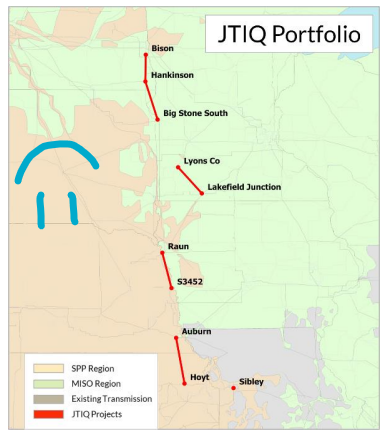On Oct 2nd, 2025 DOE announced the termination of over $7 billion in awards for 223 projects. OMB director Russ Vought implied the funding cuts are directly aimed at states led by Democrats investing in clean energy projects:

DOE failed to publish the list of specific projects they are terminating awards for, so it is difficult to verify which projects are actually impacted, aside from a few high profile Hydrogen Hubs in California and the Pacific Northwest. However, Politico published a list they obtained with project names and recipients, and House Appropriations Committee Democrats published a similar list with associated award amounts. One targeted award that stood out was a $464 million award to the Minnesota Department of Commerce:


This almost certainly is the project supporting the SPP-MISO Joint Targeted Interconnection Queue (JTIQ) effort, as announced by the MN Department of Commerce and the DOE Factsheet when the selection occurred.
Let’s take a closer look at the JTIQ project:
- From the latest MISO factsheet: “The JTIQ portfolio addresses significant barriers to the development of new generation along the MISO-SPP seam, enabling approximately 28.6 GW of generation to interconnect.”
- While MN is the lead state listed on the application, SPP and MISO span multiple states in the mid-west and DOE’s own site lists project locations as including IA, KS, ND, NE, MN, MO, and SD as shown in the map below

- Most recently, on June 26, 2025 FERC approved the proposed cost allocation for the JTIQ projects which specifically identified that the DOE funding would offset all of the costs that otherwise would have been paid by customers in the MISO-SPP regions. The backstop cost allocation also clearly indicates that if the number of generators are insufficient to cover the costs (or if total costs rise because of a termination of DOE awards), customers are on the hook.
To recap: DOE canceled an award for a portfolio of interregional transmission projects across seven mid-west states (6 of which voted for Trump in 2024) that would have enabled 26 GW of new generators to interconnect, lower interconnection timelines, increase reliability, and decrease costs to consumers. The immediate effect of this should the projects go forward is to increase costs to consumers, causing electricity prices to go up.
Maybe DOE thought because MN was listed as the prime recipient that it wouldn’t affect any other states? Maybe they thought transmission only helps wind power instead of providing a multitude of benefits? Maybe they thought forcing customers to pay to keep uneconomic coal plants online is a sufficient replacement to new generators come online? Hard to say.

